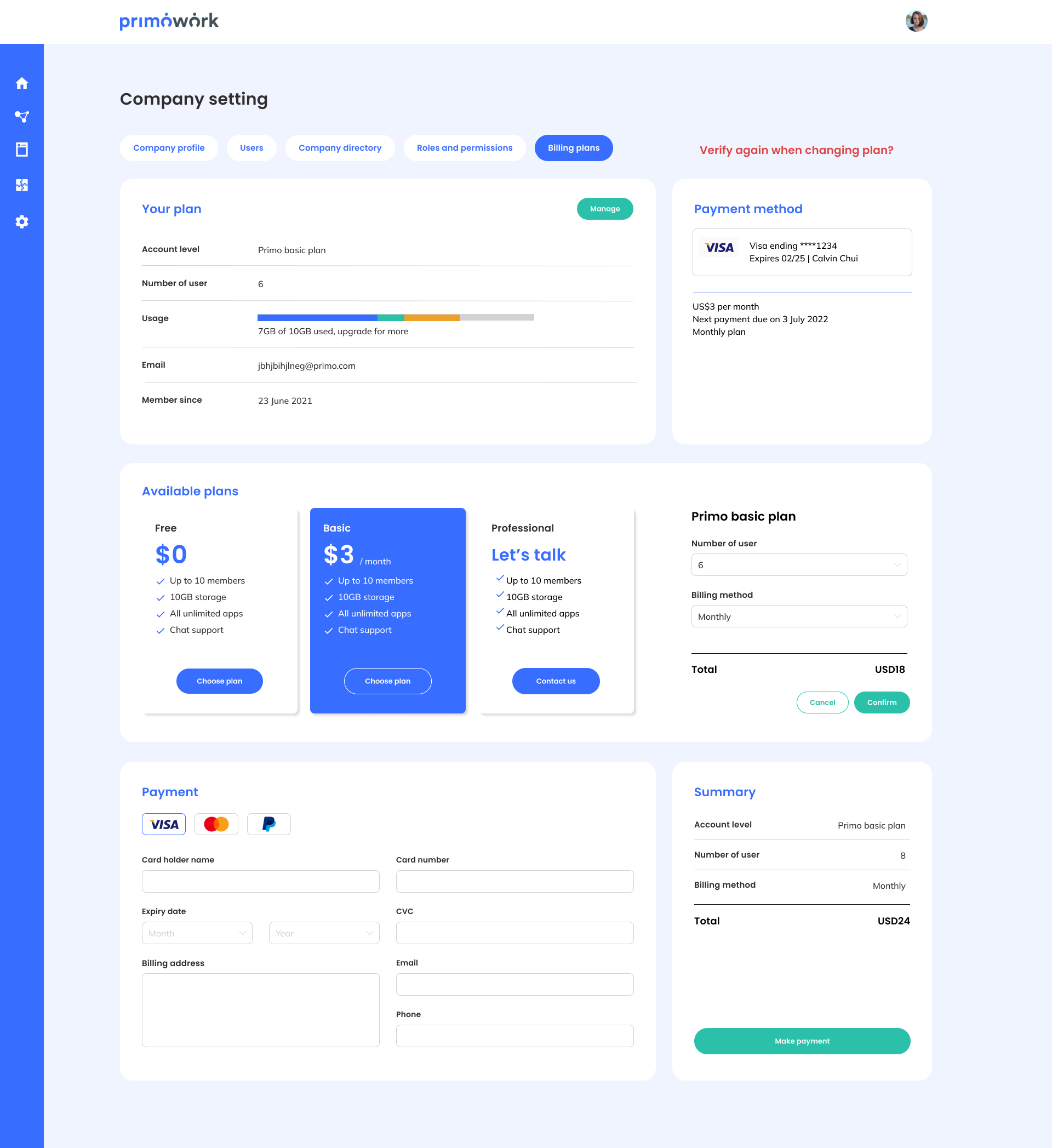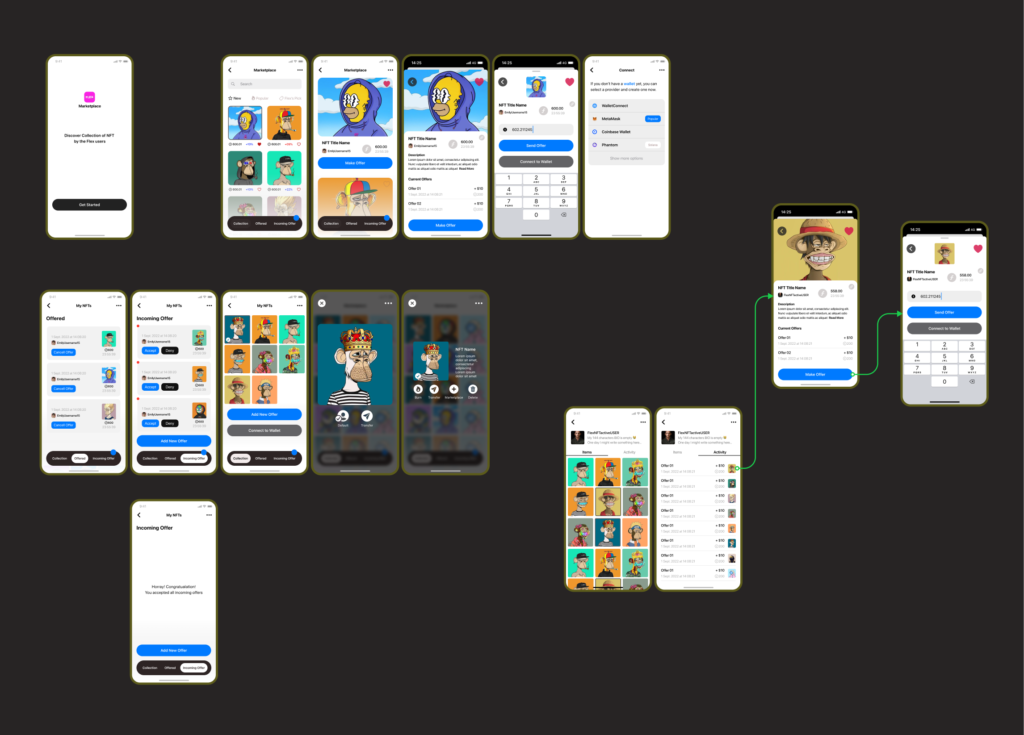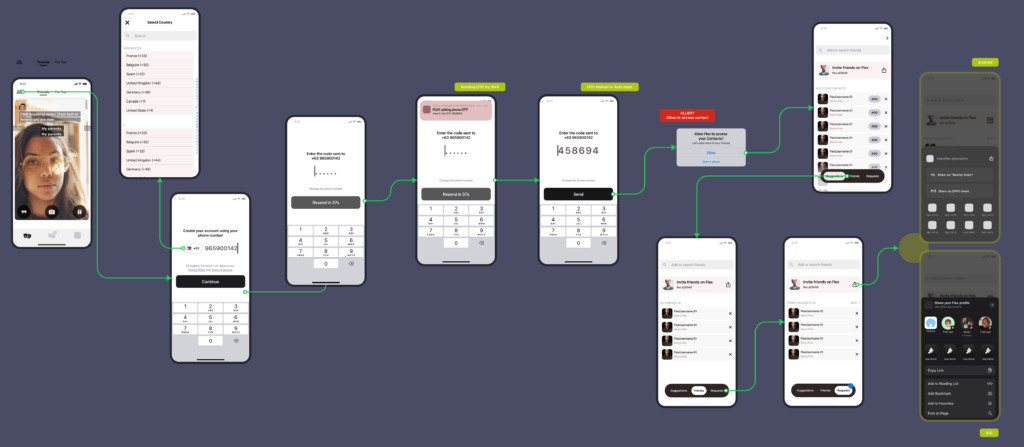Client
PrimoWork
Timeline
2 weeks
Business Type
B2C
First public App to market which is suitable for different kinds of SME business.
We will position this app for connecting people, working information, and applications
in one place.
Problem Statement
The current billing system in our organization has been identified as an area of concern due to its lack of flexibility and transparency. This has resulted in a number of challenges that affect customer satisfaction, as well as day-to-day operations of the business.
It is clear that the current system does not adequately meet the needs of our customers, and that has translated into negative feedback and comments from clients.
Problem Sololution
To address this, we propose building an intuitive billing portal with flexible pricing options, enhanced usage tracking, automated processes, scalable infrastructure, detailed billing statements, proactive customer support, data security, analytics, and a feedback loop for continuous improvement.
Discover
Discover
Define
Define
Ideate
Ideate
Design
Design
Test
Test
Discover Phase
Is to thoroughly understand the current billing process, identify pain points, gather requirements from stakeholders, and define the scope for designing a new billing system that enhances efficiency, transparency, and customer satisfaction.
This billing plan research report provides a comprehensive analysis of billing plan options and their suitability for our organization. The objective of this research is to identify the most efficient, customer-friendly, and cost-effective billing plan that aligns with our business goals and customer needs.
Research Report
This research report aims to evaluate various billing plan options to determine the most suitable approach for our organization. The report provides insights into the advantages, disadvantages, and potential challenges associated with different billing methods.
Methodology: The research methodology included an analysis of our current billing system, customer feedback collection, market research, and a comprehensive comparison of billing plan options. The findings are presented in this report to aid in decision-making.
Current Billing System Overview
Description of Existing Billing Process: This section provides an overview of our current billing process, highlighting its strengths and weaknesses.
Challenges and Limitations: We discuss the challenges and limitations of our existing billing system, emphasizing the need for a more efficient solution.
Billing Plan Options
This section explores various billing plan options, including flat-rate billing, tiered pricing, usage-based billing, subscription-based billing, and customizable billing plans.
Comparison of Billing Plan Options
We present a detailed comparison of the billing plan options, focusing on their advantages and disadvantages. We assess their suitability for our products/services.
Customer Feedback and Preferences
Based on surveys and customer interviews, we present insights into customer preferences regarding billing plans, including their willingness to adapt to new models.
Market Research
We examine industry best practices and analyze competitor billing plans to understand market trends and customer expectations.
Recommendations
Based on our research, we make recommendations for the preferred billing plan, providing a rationale for our choice.
Implementation Considerations
We discuss the technological and infrastructure requirements for implementing the chosen billing plan. Additionally, we address data security and compliance issues and outline a customer communication strategy.
Cost Analysis
This section provides a cost analysis, including initial setup costs, ongoing operational costs, and revenue projection based on the chosen billing plan.
Risk Assessment
We identify potential risks associated with the implementation of the new billing plan and propose mitigation strategies.
Define Phase
We found many ways to come up with good solutions, like brainstorming and problem solving. These techniques can make a solution even better.
Ideate Phase
We chose a good plan and drew some rough drawings. We asked Hermes Go for help with the product. Then we made more detailed plans based on the rough drawings. We looked at everything very carefully and made a test version of the product.
Design Phase
The visual elements were chosen to help vendors for smooth day-to-day interaction. We specifically focused on the aesthetics of a few screens that involved dashboard data visualization and creation of loads on the map view.
Test Phase
The selection of visual elements was deliberate, aiming to facilitate seamless day-to-day interactions for vendors. Our primary emphasis was on enhancing the aesthetics of specific screens, particularly those related to visualizing dashboard data and creating loads on the map view.










